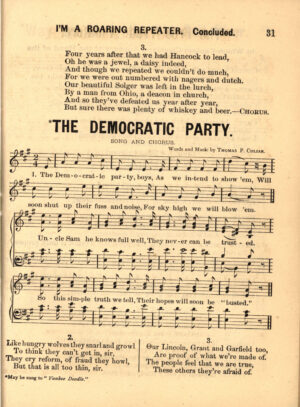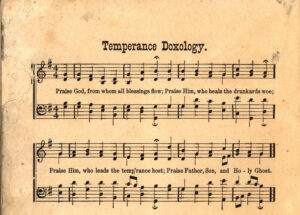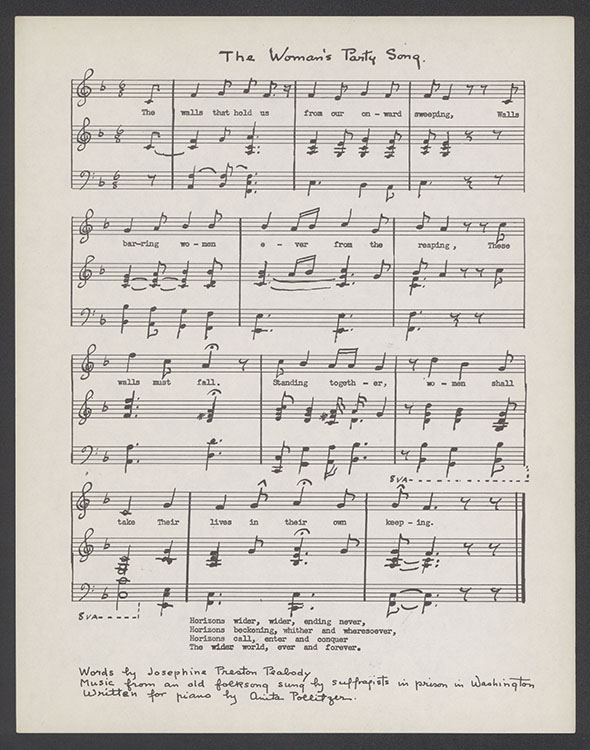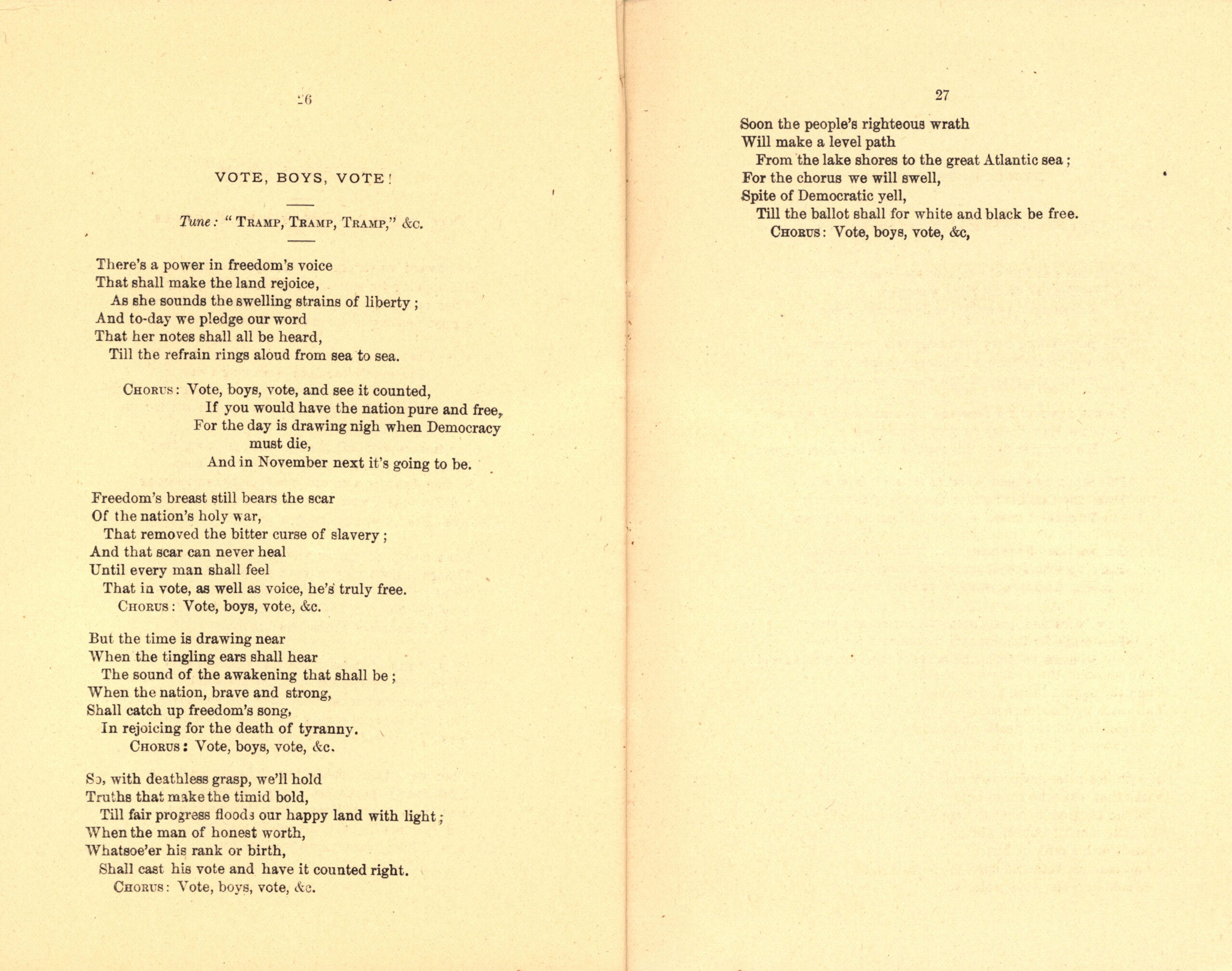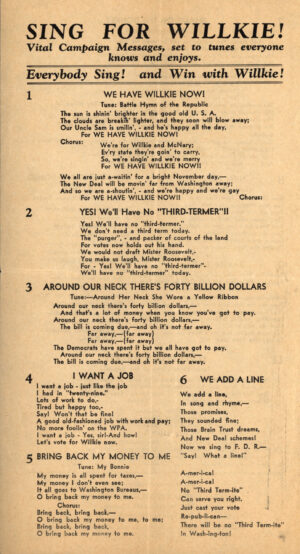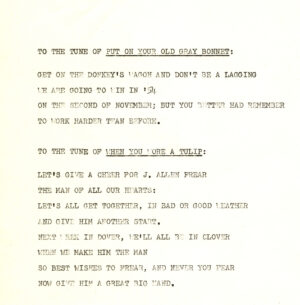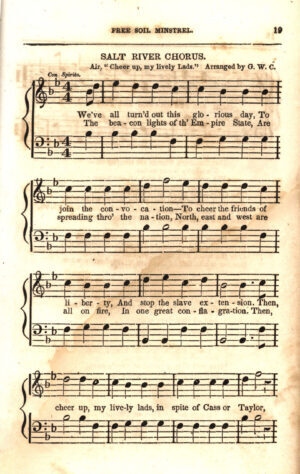Campaign songs began as partisan tools to promote the qualities and experience of political candidates, or used to attack rivals. Original compositions set to well-known tunes, campaign songs are as old as American presidential elections, but did not come into their own until the election of 1840.
In the early days of the republic, voters had to be white, male and landowners, limiting the electorate to the wealthy and well educated. By the end of the 1830s, most states had repealed the landowner requirement, expanding the voter pool to less educated men. Campaign songs in this environment became tools to educate these new voters on candidates and issues. By composing simple songs set to well-known tunes, campaign songs could travel the country on the lips of voters and widen the reputation of the candidate. One of the best-known campaign songs, “Tippecanoe and Tyler Too,” was written for President William Henry Harrison and Vice President (and future President) John Tyler. Harrison, a general in the War of 1812 who won the Battle of Tippecanoe, and composer Alexander Coffman Ross used this as the basis for his song. The title of this ditty also became the main slogan for the Harrison-Tyler campaign.
Campaign songs remained popular throughout the nineteenth and early twentieth centuries, when the expanding media landscape allowed campaigns to select popular music of the day to incorporate into their campaigns, a tradition that continues to this day. Though primarily associated with presidential campaigns, campaign songs were also used to rally support for social and policy issues, including abolition and temperance.

